Posts Tagged ‘comics reviews’
Comics Time: Doomwar #1
February 22, 2010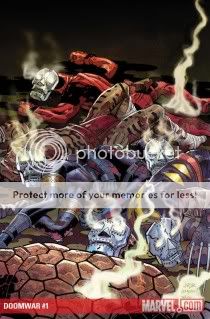
Doomwar #1
Jonathan Maberry, writer
Scot Eaton, artist
Marvel, February 2010
34 story pages
$3.99
This isn’t a review so much as a couple paragraphs about how rad I think Doctor Doom is:
Doctor Doom should be King Shit of Marvel’s Turd Mountain. Seriously, he should be the one bad guy that makes even all the other bad guys go, “Whoa.” He rules his own country, he rivals Doctor Strange on sorcery and Mister Fantastic on science (and ranks with both of ’em on the awesome-name score), he’s up there with Iron Man on the super-armor scale, he’s got a great look, and he’s like crazy arrogant and angry all the time. He’s the ur-villain. What I’ve liked about his recent cameos in books like Captain America: Reborn and Siege: The Cabal is that the other big-deal villains like the Red Skull and Norman Osborn seem to realize all this but still attempt to use Doom for their own ends, because his skills make him too useful and their own megalomania blinds them to the downside of crossing him. That’s about right.
However, it always feels to me like he’s overused in terms of his interactions with heroes. I don’t mind him constantly in sotto voce contact with the other big schemers, that seems like something Marvel’s megalomaniacal mastermind-type villains would always be doing. But when he jumps ugly with the good guys, that to me is the kind of thing you save for an every-few-years jolt, not a constant string of tussles. He’s just too formidable a threat to frequently use without devaluing the brand. Every appearance should be for the ages, and his every interaction with a hero or team should alter their status quo for the long term. (I actually think that’s true of every A-list villain, but I understand the difficulties involved; Doom seems like the kind of character you ought to try really hard to do right regardless.)
Is Doomwar the kind of Doom-based throwdown I’m looking for? It’s too soon to say. Doom himself is just a puppetmaster in this early installment, though his master plan as it’s been described to us by Black Panther siblings T’Challa and Shuri, whom he has dethroned, is suitably pseudoscientifically apocalyptic. Seizing 10,000 tons of Vibranium from Wakanda and using it to unlock god knows what mystical mumbo-jumbo is the kind of thing you’d figure Doom would spend his afternoons planning. Being an ice-cold murderer in support of it, shooting a civilian every few minutes until Storm, the current Queen of Wakanda, acquiesces to his demands–yeah, that’s also something Doom would do in my book. What does he care? He’s a tyrant, let him be tyrannical. I understand that that’s the sort of thing lots of people will just read as “icky,” but villains have been killing people in genre material young people have read for decade upon decade. Saruman’s goons wased a bunch of hobbits for pete’s sake. I’ll live.
What’s interesting about Doomwar is that I didn’t expect it to be so…Brubakerian, I guess is the word for it. It’s “superheroes as black ops” in the Mighty Marvel Manner. Scot Eaton is drawing in that scratchy Marvel house style of the past several years; it’s much more of a piece with Steve Epting and Mike Perkins and Butch Guice than with the jazzy John Romita Jr. covers the book sports, although he shares with JRJR a real knack for drawing bruisers. Colossus, T’Challa, and Doom all look like dudes you wouldn’t want to mess with at all. Meanwhile, the concept could have come straight from one of Ed Brubaker’s Captain America storylines, too, and insofar as it’s about a sinister group that uses an appeal to patriotism to wrest control of a democracy over to a sinister outside force–the plot of Brubaker’s “The Man Who Bought America” arc, with Wakanda instead of America and Doom instead of the Red Skull–that’s basically what it did. It even shares with Brubaker Cap a knack for resonating with current events without referencing them outright: I can’t be the only person who thought of Uganda’s anti-homosexuality legislation when reading the coup leader’s diatribe against mutants and witchcraft and suchlike. In turn, the Black Panthers are presented less as superheroes than as exiled leaders plotting the violent overthrow of the regime that violently overthrew them first. Cyclops and Emma Frost quietly funneling various X-Men to them in hopes of freeing Storm reads like a mutantified version of Charlie Wilson’s War.
I suppose this could all come across as rather dreary and by-the-numbers. And it might be, if not for a few factors. One is the presence of Doom, so far latent rather than actualized, and my lingering hope that he’ll do something totally awesome. Two is Eaton’s literally muscular art–I find I just like looking at it a lot. Three, and most promisingly, is an out-of-left-field ending that short-circuited my every expectation of what the primary business of this series was going to be for the rest of its issues. The way it goes down actually gives me more faith in the future fortunes of the aforementioned Factors One and Two, in fact. Fingers crossed.
Comics Time: Footnotes in Gaza
February 19, 2010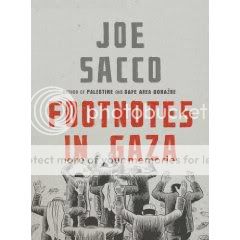
Footnotes in Gaza
Joe Sacco, writer/artist
Metropolitan, December 2009
416 pages
$29.95, hardcover
Journalist Joe Sacco’s latest book is about two massacres of Palestinian civilians by Israeli soldiers in two Gaza Strip camps/towns during the Suez Crisis in 1956. I think there are several things you can point to in it and say “Joe Sacco does that very well.”
The first is what you might refer to optimistically as scale or pessimistically as sprawl. There’s a memorable three-page sequence in the early going tht compares what the Palestinian refugee camps looked like in the mid-’50s, the time of the events the book spends most of its time chronicling, to what they looked like in the mid-’00s, which was when Sacco did the chronicling. On the first splash page, rows of little brick houses with sloping roofs and walled-in yard-like compounds trail off into the distance; a little street crosses the page in the foreground while the rows stop short of the horizon, which is buffered by a strip of wildnerness and then another, barely visible town just at the limit of sight. On the second page, giant apartment buildings jut upward against tiny shacks whose metal roofs are pinned down by bricks, tires, and debris; the roofs and clotheslines and water towers and telephone wires begin right at the bottom of the two-page spread and keep going until the taller buildings literally blot out the vast majority of the horizon, and even chunks of the sky. The message seems clear: Things may have been pretty bad for the impoverished, angry people of Gaza back then; everything is worse now. This is driven home later in the book by a second spread that mimics the set-up of the one that established the look of the camps today: This one show a barbed-wire fence and the ruins of bulldozed homes as far as the eye can see. Sacco is fond of that temporal-juxtaposition device, never more brutally used than when we see a contemporary row of cars parked against a wall on the right-hand side of a spread where dozens of dead bodies had been shown to us against that same wall some fifty years before on the left-hand side. Sometimes Sacco uses his skill with scale not for a landscape or panorama, but for single structures: The IDF towers that oversee the town of Rafah or a nearby checkpoint on the road to Gaza City rear up to the sky like menacing robots, while bulldozed multi-story building where many people once lived dwarfs us with the absence of it that we project against the sky. Other times it’s explosions and chaos that overwhelm us, swirls of stippled smoke and fire obliterating buildings and bodies alike.
The second thing Sacco does well is visual repetition. You see this in that initial page of the mid-century refugee camp and its little block houses, of course. But later, you see it with bodies. Men forced to run pell-mell through the streets of their camp by angry soldiers firing in the air, and sometimes not in the air at all. Often they are all made to strike the same pose, arms in the air to show they are unarmed; the unnatural positioning leads to a criss-cross effect as the men scramble around and past and behind and in front of one another. Sacco will shift to a bird’s eye view here, make skillful use of alternating gray and white clothing there, freeze the men with their backs to us like they’ve been paused in the middle of a Michael Jackson video dance routine here, throw them into a morass of beatings by the Israeli soldiers like a nightmare version of that third, battle-heavy Where’s Waldo? book there. Repetition leads to perhaps the book’s single most striking visual: The men of the town of Rafah, rounded up en masse in a schoolyard, forced to sit on the ground with their hands on their heads for hours at a time. Sacco shows this vista from slightly above and in front, from a three-quarter angle, from behind; the men become a featureless mass of little ovals of fear and discomfort, bleeding and pissing on one another, slightly cracked eggs in a massive carton.
The third thing Sacco does well is conveying a sense of action, or intense activity if you distrust that word’s genre connotations. Sacco’s careening caption boxes alone can get across the sweep of a magnificent view, the interruptions of constant cellphone calls, the chaos of constant violence, the chatter of a party, the march of history, the swell of a crowd, and the dance moves of beautiful women all by themselves–and in the book’s first seven pages, they do all that and more. Elsewhere he uses perspective tricks, like a swoop of flame that makes it look like a burning soldier has literally been propelled toward us. In the chaos of a sudden attack by an Israeli patrol he cross-cuts two different sentences like a giant X across an almost collage-effect collection of panels showing him and his companions as they flee in all directions; you have to read one of them backwards, manga-style. And it’s all but impossible to forget the montage based on the two stick-swinging soldiers seared into the memory of every man in the town as they tee off on hundreds of terrified captives being herded through a narrow gate, or the jump-cut chaos of a black-bordered POV sequence that makes as bold a use of the cut-to-black as anything since a certain HBO TV show.
The fourth thing Sacco does well is portraiture. This book is just as much a Beard Parade (and Mustache Parade, and Grumpy Little Kid Parade, and Wrinkled Old Lady Parade) as R. Crumb’s Book of Genesis Illustrated, and there’s just as much care and attention put into differentiating each from the other. (The exception are the Israeli soldiers in the flashback sequences; they have a uniform build, the shadow of their pith helmets rendering them eyeless and inscrutable. Only the notably monstrous or humane gain individualization.) But even still there are standouts. Take Sacco’s frequent interview subject and companion Khaled: A Palestinian guerrilla marked for death by the IDF and constantly moving from place to place, he nonetheless has a Cheshire Cat serenity in his heavy-lidded face. We frequently see him in repose, including one sequence where he lies immobile in bed, staring directly at the reader as he speaks of his utter exhaustion with his life on the run. The lines with which Sacco crafts his massive forehead, riven with wrinkles like the rungs of a ladder, and his jutting ears, and those preternaturally taciturn eyes, are all about the smoothest you’ll see in the entire book; they make him look like a Dick Tracy villain.
The regional leaders Sacco shows us also have a comic-book or James-Bond heavy vibe to them. Nasser is almost always shown pensively stroking his chin or smoking a cigarette, constantly scheming and planning for the greater glory of the Arab World, by which he means Egypt, by which he means Nasser. Ben-Gurion, with his wild ring of white hair, and Dayan, with his can’t-make-it-up Hollywood pirate eyepatch, point to maps and whisper in ears, goading like composite human versions of the angels and devils who appear on cartoon characters’ shoulders. At one point, the Egyptian and Israeli leaders are shown in the exact same poses as their forces clash; the implication of this mirroring for the Palestinians used as pawns in their schemes to provoke one another into a ruinous war is perfectly clear.
Individual militants can look like bad guys, too. An aged fedayeen telling of his career of raids on Israel-held lands at the behest of the Egyptian military looks for all the world like the standard stereotypical supervillain image of the Ayatollah, while his evident horror at having been made to fight side by side with out-and-out murderers whose “talents” the cynical Egyptians wanted to make use of but then hopefully have put out of commission by Israeli bullets is reflected in the mad eyes and bestial unibrow of one such killer who stares right at the reader with psychotic intensity.
I’m making Sacco’s portraiture seem un-subtle, I know. And in those cases, I suppose it is, to an extent anyway; his level of craft always elevates his Eisnerian-pantomime body language and facial expressions above caricature. But when he really sharpens the knife in this regard, when he puts together a sequence or assembles a moment that plays across a human face like a miniature film, that’s when he’s at his most dangerous and devastating. Right now I have the book open to a page where a three-panel tier at the top shows an old man, again staring straight at us, recalling how little time he had to bury his slain relatives in the first two panels, and then bam, in panel three, his eyes are closed and he’s silently weeping. Below that we see the first-grader self of a woman who’s old now, a look of utter confusion and dismay on her face as she watches the women of her neighborhood writhing on the ground and screaming in grief. Somehow even more frightening to me is a woman whose house is the last one standing on a block constantly being bulldozed by the Israelis as part of their policy of leveling any structure from which any kind of threat has emerged. (Sacco never says it outright, but it appears that saying that this justification is gilding the lily would be the understatement of the decade.) As the woman tells Sacco of her plight–how they’d leave their house since it’s clear the Israelis want no one in this area, but they have no money to move anyplace else; how her daughter has started pissing on herself and just crawling around in terror when the ‘dozers strike–she looks this way and that depending on where she’s standing, but the expression of wide-eyed, slackjawed horror on her face never changes at all.
But there are a pair of sequences even stronger, to me, than those moments. They’re stronger even than the rare times when Sacco makes his feelings on these subjects clear–his disgust at the grotesque, casually genocidal racism of an archival Israeli document about the displaced Palestinians; his disgust at the hypocrisy of Palestinian militants who decry the civilian casualties inflicted by Israeli soldiers even though their weapons allow for deadly precision, but disregard the fact that human explosives who enter a pizzeria or board a bus are the most precisely guided weapons of all; his digust at himself for forcing old, bereaved, desperately poor people to relive the worst day of their lives, then getting mad at them for digressing or getting their facts mixed up. These two strongest segments are sequences in which the immediately identifiable, loving connection of family to family and the unimaginable reality of violence are smashed together with astonishing power. The first is in a flashback from an old woman, picturing herself as the little girl she once was when soldiers entered her home and shot her father to death as she sat next to him. He slumps against the wall in a jacket and striped pajamas and traditional headgear, his head pointing sightlessly downward as if staring at the dark mass of blood staining his stomach; next to him the chubby, curly-haired, barefoot little girl, looking like one of those Campbell’s soup cherubs, looks up at her dead father, her tiny face seeming to crumple into a black hole of utter sadness. The second is another reminiscence by an old woman, recalling how she found her husband in the chaos after the book’s central round-up took place. Two panels show him fleeing for his very life, panicked and paranoid, mouth agape, eyes darting to and fro, a look of raw animal terror on his face–until in the third panel his wife literally catches him as he runs, looking up at him plaintively as he turns toward her mid-stride, the fact that he’s been grabbed by the woman he loves and not by…someone else clearly still not having registered. In that moment I tried to imagine what it would be like for my wife to see that look on my face, the look of all other thought and emotion and sentience out of my eyes, the look of a lifeform’s basic, primordial desire just to survive the next moment.
The fifth thing Sacco does well is convince you–or me at least–that there are no good guys in this world, only bad guys and victims, and that you’re lucky beyond imagining that you’ve never been forced you to find out which of the two you really are.
Comics Time: Green Lantern #43-51
February 17, 2010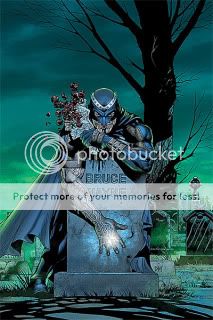
Green Lantern #43-51
Geoff Johns, writer
Doug Mahnke, artist
Ed Benes, artist on issue #47
DC, 2009-2010
22 story pages each except #50 which was longer
$2.99 each
Off the top of my head, here’s the stuff you’ll find in these Blackest Night tie-in issues of the ongoing Green Lantern series: Black Hand, Black Hand becomes the embodiment of the Black Lantern Corps, Martian Manhunter, Abin Sur, Abin Sur’s sister and Sinestro’s girlfriend Arin Sur, Barry Allen, John Stewart and that planet he blew up, John Stewart was part of Black Hawk Down, the Star Sapphires vs. the Sinestro Corps, Sinestro vs. Mongul for control of the Yellow Lanterns, the new Rainbow Lantern team featuring the Flash and Wonder Woman and Lex Luthor and so on, the Spectre, Parallax, Hal Jordan deliberately becoming Parallax again, Parallax getting kidnapped by some force only Hector Hammond is aware of, the Predator escapes from Zamaron, Blue Lanterns vs. Orange Lanterns, Red Lanterns vs. Green Lanterns, all the leaders of the different Corps teaming up, Orange Lantern Lex Luthor figures out that the Black Lantern Corps works the same way that the Orange Lantern “Corps” does, Ganthet becomes a Green Lantern, it looks like the Spectre might be to the Red Lanterns what Parallax is to Yellow and Ion is to Green and Predator is to Violet and Black Hand is to Black but he’s not but there’s a Red entity out there someplace…It’s crazy. The Yellow Lantern Scarecrow gets crucified at one point–in Siege, the weight of that one beat would anchor an entire issue, but in this storyline it’s like half a page.
What you have here, in other words, is supercompressed storytelling as filtered through the sensibilities of someone who really isn’t interested in formal play (unlike Grant Morrison and…uh, um, those other writers who do supercompressed superhero comics besides Grant Morrison, you know the ones) so much as just taking every aspect of the greater Green Lantern mythos and exploring every possible permutation of it in as rapid succession as possible. Having had no brief with Green Lantern before Geoff Johns started writing him, I’m surprised to find myself enjoying this stuff this much, and on this geeky a level. I mean, when I read today’s issue and realized that the Spectre might be the Red Entity, I actually gasped out loud. And I couldn’t care about the Spectre less! It’s just that kind of comic. If you enjoy the world Johns has built from the pieces of Green Lantern he found lying around and started connecting, watching the increasingly elaborate edifice he’s constructing here is a true treat.
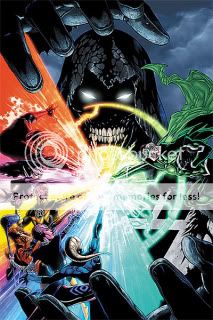 And when you sit and read it all at once, it’s not even incoherent–it’s just like a constant stream of rad shit hitting your eyeballs, and provided you have the kind of brain equipped to file away genre arcana and recall it as necessary, it flows from one thing into the next with the clarity and purpose of a freight train. Artist Doug Mahnke is an indispensable part of why this works. Mahnke rapidly ascended into my half-dozen or so favorite contemporary superhero artists over the course of his past three major projects; his segue from Final Crisis/Superman Beyond to these key Blackest Night tie-ins is arguably the first smooth transition from one project to another that any of DC’s event-comics artists have pulled off. (Seriously, Rags Morales, Phil Jimenez, J.G. Jones, and Carlos Pacheco all disappeared from DC after their star turns.) What makes him such a good fit here is both his proficiency with horror and monster-movie imagery (standout moments include Black Lantern Abin Sur using his ring to create a ravenous horde of giant floating disembodied black skulls, like he’s Stardust the Super-Wizard or something, and the way he paced Parallax’s fight with the Godzilla-sized Black Lantern Spectre to interrupt Orange Lantern Luthor’s tussle with Orange Lantern Larfleeze with the fall of one mighty foot) and the way his thick line, emboldened by inker Christian Alamy, holds the bright colors that the material demands. The funny thing is that the “dudes zapping dudes in all different directions” fight un-choreography I always complain about when I see it in ’90s X-Men books or contemporary Avengers titles is inherent to how these characters operate, but Mahnke’s visual imagination and ability to harness those effects and make them feel consequential rather than full of sound and fury but signifying nothing gets them over as involving battles anyway. This storyline–especially when read divorced from the larger plot points of Blackest Night with which it intertwines–is one of the great gonzo thrills provided by genre comics right now.
And when you sit and read it all at once, it’s not even incoherent–it’s just like a constant stream of rad shit hitting your eyeballs, and provided you have the kind of brain equipped to file away genre arcana and recall it as necessary, it flows from one thing into the next with the clarity and purpose of a freight train. Artist Doug Mahnke is an indispensable part of why this works. Mahnke rapidly ascended into my half-dozen or so favorite contemporary superhero artists over the course of his past three major projects; his segue from Final Crisis/Superman Beyond to these key Blackest Night tie-ins is arguably the first smooth transition from one project to another that any of DC’s event-comics artists have pulled off. (Seriously, Rags Morales, Phil Jimenez, J.G. Jones, and Carlos Pacheco all disappeared from DC after their star turns.) What makes him such a good fit here is both his proficiency with horror and monster-movie imagery (standout moments include Black Lantern Abin Sur using his ring to create a ravenous horde of giant floating disembodied black skulls, like he’s Stardust the Super-Wizard or something, and the way he paced Parallax’s fight with the Godzilla-sized Black Lantern Spectre to interrupt Orange Lantern Luthor’s tussle with Orange Lantern Larfleeze with the fall of one mighty foot) and the way his thick line, emboldened by inker Christian Alamy, holds the bright colors that the material demands. The funny thing is that the “dudes zapping dudes in all different directions” fight un-choreography I always complain about when I see it in ’90s X-Men books or contemporary Avengers titles is inherent to how these characters operate, but Mahnke’s visual imagination and ability to harness those effects and make them feel consequential rather than full of sound and fury but signifying nothing gets them over as involving battles anyway. This storyline–especially when read divorced from the larger plot points of Blackest Night with which it intertwines–is one of the great gonzo thrills provided by genre comics right now.
Comics Time: GoGo Monster
February 15, 2010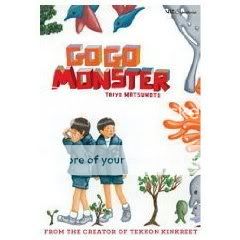
GoGo Monster
Taiyo Matsumoto, writer/artist
Viz, December 2009
464 pages, hardcover/slipcase
$27.99
It may only be the fact that Brian Chippendale just wrote about Taiyo Matsumoto yesterday, but I’d say GoGo Monster is every bit the exercise in creating a believable, cohesive, living environment that is Ninja or Multiforce or The Squirrel Machine. In fact I’d say that despite appearances to the contrary, this is truer of GoGo Monster than of Matsumoto’s Tekkon Kinkreet. TK‘s Treasure Town gives Matsumoto a far more obvious world-building workout, but ultimately its semi-dystopian near-future science-fiction metropolis can coast on our foreknowledge of such fictional environments and the narrative function they fulfill. GoGo Monster‘s run-of-the-mill elementary school can tap into our actual real-world memories of such places, certainly, but its place in a fictional narrative is comparatively undefined. Nor can it rely on the riot-of-detail school of art to accrue physical presence through a prolificacy of constituent visual parts as can those books–it’s not some fantastical land, it’s a grade school, and moreover that’s not the style Matsumoto is employing here. So to convey the kind of place Asahi Elementary School is–or at least the kind of place it is for our main characters–Matsumoto works overtime.
And he starts right away: Before we even get past the endpapers, deep-focus drawings reveal cavernous institutional hallways and vertiginous stairways, while POV close-ups of other characters reveal preoccupied teachers (that recurring pull-back-the-hair gesture!) and hostile, slightly distorted children, their speech not tied to them in the traditional word-balloon fashion, so as to suggest their fundamental disconnect from our hero. They’re not actors so much as elements, and their primary influence throughout the rest of the book is as a generator of sound effects just like wind or rain, as their near-constant disembodied chatter unfeelingly surrounds and buffets the protagonists.
Our real introduction to the school setting comes in the form of a hand-drawn map created by our main character, Yuki. It’s diagrammed out like a superhero’s headquarters, with all the funneling of wild imagination into cold orderly lines that that suggests. At the edges, menace creeps in, in the form of monstrous doodles that blackly snap at the border and proliferate in the school’s abandoned fourth floor. That level of the building takes on a central metaphorical role, demonstrating that this school exists independent from and indifferent to the hopes and fears of the child now inhabiting it.
Similar signifiers abound. Planes fly low overhead, their departure and destination unknown. A rabbit run is the only world its furry inhabitants ever know, and one of them disappears without any of its fellows or minders able to say how or to where. I have no idea if “perspective” has the dual meaning in Japanese that it does in English, but Matsumoto frequently skews and warps it so that the school leans in on its inhabitants. One pivotal character literally sees the world from inside a cardboard box. Most importantly, except for one key sequence I won’t spoil here, our heroes never leave the school grounds, and on the one occasion that parents visit, they are viewed only from a distance.
In short (haha, yeah), Asahi Elementary is the world for Yuki, who is either psychically sensitive or psychologically impaired, and Makoto, the new kid at school who befriends Yuki out of what seems more like a fascinated respect for his indifference to his peers than any kind of Heavenly Creatures-style shared psychosis, and for IQ, the eccentric-genius older kid who says he’s no more capable of taking a test without wearing his customary cardboard box than a normal person would be if forced to wear one. Their problems are solely their own and completely inescapable. If they don’t solve them, they won’t be solved.
Which makes GoGo Monster a harrowing read, in spite of the great beauty of the art. Indeed, the beauty makes the book feel like a tragedy in the making at every step. Whether they’re the product of a genuine gift or profound mental illness, Yuki’s increasingly troubling visions of a world beyond this one and the sinister Others who inhabit it can only bode poorly for him; either way, they will consume him, because in this insular world, there is no authority to which he has recourse to protect him. Yet at the same time he clings to these visions precisely because of the insularity of this world, and what it has shown him about the gray soullessness of grown-ups and their inability to connect with kids like him in any meaningful way. Only Ganz the groundskeeper and gardener understand Yuki’s plight from the adult world, but that understanding comes hand in hand with the conviction that it is in fact Yuki’s plight; Ganz tends him like a flower, but (hey, the metaphor is Matsumoto’s not mine) Yuki must blossom or wilt on his own.
In turn, Makoto and IQ are stand-ins for our own reaction to Yuki. Makoto is agnostic as to the veracity of Yuki’s visions; all he knows is that he’d prefer Yuki not have them, or at least not talk about them, because they’re frightening and they obscure the confident, funny, fascinating Yuki he otherwise knows. IQ is an atheist about them–he knows they’re all in Yuki’s head, the manifestation of various psychological complexes. But he offers this diagnosis while wearing a cardboard box on his head with an eyehole cut out, and eventually we learn this is the least of his own problems. Knowing what’s real is no help when what’s real appears to come crashing down.
In the book’s climax, that’s precisely what happens. We’re really no closer to understanding what’s really happening, though the nods in the direction of magic realism are as pronounced as, say, the end of Being There or Barton Fink. And we can only partially puzzle out the fate of a third of our trio, though sitting here after the fact I have my strong suspicion. No, Matsumoto is content to plunge characters and reader alike into a prolonged sequence of abstracted imagery, page after page that eventually becomes almost entirely obscured by darkness (which is itself depicted in just about the most fascinating way I’ve ever seen a comic do). What, if anything, emerges from the other side? Again, I’m not spoiling it here. But the journey through is a fine, emotionally accurate, uncompromising vision of the terrors of childhood. See, whether we are experiencing mental illness or actual spiritual evil here is a matter of debate–it works either way–but it definitely works as the realization that whatever meaning, safety, sanity, and comfort you can carve out of the unfeeling world, you have to carve it out yourself.
Comics Time: The Death of Superman
February 12, 2010
The Death of Superman
Dan Jurgens, Jerry Ordway, Louise Simonson, Roger Stern, writers
John Bogdanove, Tom Grummett, Jackson Guice, Dan Jurgens, Brett Breeding, Rick Burchett, Doug Hazlewood, Dennis Janke, Denis Rodier, artists
DC, 1993
168 pages
$9.99
Nostalgia is an occupational hazard for comics readers. Even as I write this, there’s a part of me that wonders how much of what I’m about to say is colored by the mere fact that I first read this material not as a 31-year-old, but as a 14-year-old, with a 14-year-old’s understanding of the industry and artform of comics. But honestly? I’m thinking “not much,” because the 31-year-old likes this comic a lot more than the 14-year-old did.
For example, back then I was deeply unimpressed by the motley crew of losers who made up the Justice League at the time, and who were really the stars of the show in the initial issues of this storyline. They’re a parade of weak designs and goofy powers, from Guy Gardner’s bowl haircut and leather jacket to Blue Beetle’s beetle-shaped spaceship Booster Gold’s superpowered spandex outfit to a character named Fire who is inexplicably green, not, you know, fire-colored. At least Ice looks icy. There’s some B-plot mystery involving a ’90s-tastic goofball named Bloodwynd (look at that ‘y’!) whose word balloons drip blood, there’s a woman warrior named Maxima who is to other, better superheroines like Wonder Woman and Phoenix what one of those cheapo greatest-hits collections you can get in a five-dollar bin at the grocery store is to the overall recording career of Johnny Cash…Man, do these guys suck.
Superman himself fared little better with me. I mean, he’s Superman, he has that going for him, which is nice. But what a square, boring world he inhabited at the time! The first issue collected here sees him face off against a bunch of underground monsters who talk like Cookie Monster and present just about as much of a convincing threat. There’s the usual horrible street-dialect comics writers of yore subjected any blue-collar character to–you know, “ta” instead of “to” and a lot of “in'”s instead of “ings.” Gross. Finally, Superman’s big character moment before the action starts is a TV interview in which they reveal a hidden power of his: The ability to avoid saying anything remotely interesting. He offers a politician’s focus-group-tested, studiously bland and inoffensive answers to questions about his role as the obviously most awesome guy in the Justice League, his recent fight with asshole Guy Gardner, the fact that Maxima looks and dresses like a swimsuit model, and so on. If the writers had set out to make him unappealing to teenagers, they couldn’t have done a better job.
And ultimately, 14-year-old me ended up sharing much of the conventional fan wisdom about Superman’s beating death at the hands of the monstrous new enemy Doomsday. Doomsday wasn’t a character, he was a plot device, created for the sole purpose of killing a character who basically couldn’t be killed. (DC would repeat this trick later with Bane and Batman, introducing a huge dude to beat the unbeatable hero.) Lex Luthor got gypped. It wasn’t a story, it was a mere slugfest, not the Shakesperean tragedy that would befit such a momentous occasion. Though I hadn’t read any of them other than The Dark Knight Returns, I was aware of the medium’s artistic masterpieces, such as Watchmen, Crisis on Infinite Earths, and Camelot 3000–did not Superman deserve a send-off of their caliber? Finally, by the time the hype died down, Superman came back to life with long hair (remember, no one used the m-word back then), and it became apparent that my multiple unopened polybagged copies of the actual death issue weren’t going to be putting me through college, I just plain felt ripped off. Instead of six copies of the Death of Superman comic, I wished I bought just one of that awesome Death of Superman t-shirt.
That last part I still agree with. The rest? Oh, to be that young and naive again! Because I’ll tell you what–I wish we could get an event comic as rollickingly entertaining as The Death of Superman today.
Viewed with some distance, read in the comfort of my marital bed rather than my parents’ basement, stacked up against the many many many many comics I’ve read since then, I find that most of my teenage complaints are flipped on their head. Okay, so the dialogue stinks, there’s really no bones to be made about that. (Seriously, people give Bendis a hard time over his tics, I know, but superhero comics have truly seen a quantum leap in the craft of creating believable, entertaining human speech.) But take that crappy Justice League (please!): It’s their very crappiness that makes the book so entertaining in its early going, when the action consists of nothing more or less than Doomsday pounding them into unconsciousness over and over again. If I recall correctly, Doomsday’s rampage effectively ended this era of the team, a consummation devoutly to be wished. It’s a perfect blending of an in-story plot with a meta need, i.e. to lose these losers. I could read page after page of Blue Beetle lying prone on a pile of rubble begging for help or Maxima getting tossed around like a sack of potatoes and never ever get tired of it.
And page after page of people getting the stuffing knocked out of them is exactly what you get, which leads to my next point: An action-comics event consisting almost entirely of action is a great idea, but as we’ve recently learned, it can be difficult to convincingly pull off if all you do is have big spreads with dudes shooting lasers in all directions in the middle of nowhere, punctuated by approximately one memorable action beat per issue. In The Death of Superman, laser blasts are kept to a minimum, and when they’re fired, they’re all pointed in one direction at one guy: Doomsday, who just stands there and takes it. Most of the rest of the action is fisticuffs, a pure slobberknocker. Doomsday has a simple goal: Keep moving and keep destroying. Superman and friends have a goal that’s just as simple: Stop him. In that basic set-up we have a sense of directionality, a readily understandable concept of what victory or defeat for either side looks like, and a simple way to root the combat in the immediate physical presence of the combatants.
I’m also now struck by how smartly staged the action can get. Doomsday’s less a villain than your basic rampaging monster, and thus the creative team sets him loose in time-tested rampaging-monster fashion, having him smash his way through everyday environments like a highway, a Wal-Mart, a suburban neighborhood. You picture something like this happening near where you live and quickly get a sense of how friggin’ cool it would look. In addition, Doomsday’s always moving, which gives the fight a propulsive momentum, but when he does get bogged down for a time by Superman or the Justice Losers, the creators make skillful use of that particular place–in the suburbs, a single mother bickers with her teenage son until Doomsday lobs a knocked-out superheroine through their kitchen window and eventually lights the whole house on fire; near the headquarters of the Jack Kirby-created Cadmus Labs, Superman and Doomsday fight in a giant technoorganic Ewok village whose treelike structures they bring clattering down like Lincoln logs; the final stage of the fight is just a bareknuckle brawl in the middle of the street outside the Daily Planet, which location they quickly reduce to a slag heap. In each case, you get a sense of where you are and what’s happening to it. Action has consequences.
Doomsday himself, moreover, is a great design. In the comic, he starts out in an all-over green jumpsuit and mask, festooned with looping binders, that obscures his bony spikes and monstrous face. He looks like a square-bodied Kirby creation run amok. But as the fight progresses, his outfit is torn away, revealing the very ’90s everything-more-awesome-than-everything-else spikes and claws and so on we’ve come to know. One of those allegorical Kurt Busiek/Alex Ross/Brent Anderson Astro City character designs couldn’t have done it better. Superman’s thoughts throughout the fight are a stand-in for our own: a dawning realization that yeah, this guy could succeed where everyone else failed.
In the end, that success (albeit pyrrhic–Doomsday “dies” too) comes suddenly. The final four issues of the story famously “counted down” from four panels per page to three to two, until in the climactic issue the story is told entirely through splash pages. What’s exciting about this to me now is that it’s hard to imagine a comic doing that today, simply because splash pages aren’t storytelling devices, they’re pin-ups and future original art sales revenue. But the Jurgens/Breeding team actually does things with those one-panel-per-page images other than “here, look at this awesome pose!” They awkwardly shift Superman’s body around: For every shot in which he’s flying menacingly at the viewer, there are several more where he’s being hurled into a helicopter, or where he slams into his opponent upside-down, or where he’s driven by his feet headfirst into the concrete. The angle shifts dramatically as well, and the bold transitions–from a worm’s-eye-view behind Doomsday’s legs to a medium shot of Doomsday from the front getting punched in the back to a ten-feet-overhead view looking straight down at Superman as he heat-visions Doomsday into the side of a building, for example–create an unpredictable, gripping flow. On the page in which the two fighters ready what will be their final blows, there are no grand gestures or profound interior monologues; the last thing Superman thinks before receiving a mortal injury is just “I’ve got to put this guy away while I still can!” (“This guy”!) Yeah, it’s a little awkward that the tableaux of grief with which we are presented are Ma and Pa Kent, Lois Lane and Jimmy Olsen, and…Bloodwynd and Ice, but the melodrama of that final image–Lois crying to the heavens with her hands twisted into tense claws, Superman lying stretched-out and slack-jawed in the rubble, his tattered cape fluttering off of some nearby rebar like a flag, Jimmy snapping one last photo (from the rear, but I assume he got the angle right eventually)–is a miniature model of body language, jagged edges, and superhero spectacle. And hey, lookit that–that’s not a bad way to describe the whole book.
Comics Time: Monkey & Spoon
February 10, 2010
Monkey & Spoon
Simone Lia, writer/artist
AdHouse, 2004
pages
$9.95
What a pleasant book this is! I’ve loved it for a long time. It’s nothing more or less than a little scene about a husband-and-wife sock monkey and a doll made from a spoon who fight and then make up, but the specifics are just nailed. The book begins with a long wordless stretch as the couple fix a meal, with pointed silences and angry glances galore. When they finally start talking, each word is freighted with a day’s worth of frustrations and perceived slights, and every choice of phrase is belabored until it loses all meaning other than “WE’RE FIGHTING”: “This is pathetic ” “Pathetic? Is that what you think when I say something? It’s pathetic?” “I didn’t say that. You’re twisting my words.” Lia really gets the timing of how people talk when they’re arguing, too–I particularly loved how the monkey jumped on the spoon’s first soft-spoken statement with an all-caps “PARDON?” But soon enough a crisis intervenes, and the two instantly drop their hostile facades to attend to one another’s more pressing needs; once those have passed, they both remain in a safe enough emotional space to apologize for their bad acts and reach out to one another again. In my experience that’s how fights with the person you love work: Things can get as nasty as you’d expect when you’ve got a whole life together from which to draw your ammo, but it’s ultimately that life together that matters, and usually some part of you is just waiting an excuse to deactivate your offensive weapons and reconnect. Lia’s twee-crude line and character designs prove surprisingly resilient and effective in communicating such finely observed points, and providing big grin-provoking physical beats in the process. This book has a goal and meets it with precision and panache. Here’s your Valentine’s Day gift, Amazon Prime members.
Comics Time: The Book of Genesis Illustrated
February 8, 2010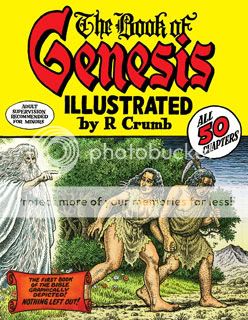
The Book of Genesis Illustrated
R. Crumb, writer-artist
Adapted from Genesis: Translation and Commentary and The Five Books of Moses by Robert Alter
W.W. Norton, 2009
224 pages, hardcover
$24.95
Captivating, illuminating, at times laugh-out-loud funny, and almost belief-beggaringly gorgeous, R. Crumb’s ambitious adaptation of the Bible’s first and foundational book hit pretty much every note I wanted to hear from such a project.
For starters, as a showcase of Crumb’s drawing chops–masterful even in his old(er) age–it’s tough to top. I’m aware of the criticism that it could have been subtitled Beards on Parade, and I reject that criticism, or rather I invert it: the beard parades were among the best parts! And they’re perhaps the most emblematic sections of the entire book, in that they boil Crumb’s project down to its essence. Genesis’ long multigenerational tale of the patriarchs of the Israelites and their large extended families necessarily includes a lot of hirsute dudes in Cecil B. DeMillian garb, and at times even substitutes litanies of their names for any actual story or plot. So what you get during the long lists of sons or what the back cover jocularly refers to as “The ‘Begots'” is a bit like folding one of Crumb’s sketchbooks into a comic. As the generations rattle by, Crumb draws scene after one-panel scene depicting some family activity at random: A mother nurses and laughs as her other son runs past playing; another mother breaks up a fight between two kids; people dance and drink at a party. At other times he’ll simply insert postage-stamp panel portraits of each person, inventing them out of whole cloth, and the act of reading becomes a master class in how many variations of the human face can be captured by one artist. In each case, through Crumb’s attention to detail, mastery of crosshatching and stippling, and rock-solid carved-from-clay character construction, an entire life, and the world that surronds it, is suggested in the space of a panel.
And that’s pretty much what made the whole book so very appealing to me–another litany, that of the keenly observed and impeccably depicted moments that take the musty, revised, translated, censored, edited, politically motivated, at times inspired, frequently batshit bizarre text of the world’s most important religious document and make it something fun to read. Gimli-like Abraham, never looking his (not-firstborn, not only!) son Isaac in the eye as he leads the lad to the slaughter. The denizens of Sodom, portrayed not as a bunch of mincing homos, but rather as a predatory pack of grinning good-time assholes. The destruction of Sodom and Gomorrah, portrayed in a stand-out layout of three widescreen panels that arrange contorted bodies and black and white spaces in a manner suggestive of an un-abstract David B. The close-up on Lot’s face as he begs God to let him hide out in a nearby town rather than force him to take a dangerous journey even further away from the soon-to-be-destroyed cities, his wild eyes matching the desperation in his repeated assertion that “it’s such a little place!” The moving, teary-eyed embraces during the rapprochements of sundered brothers Jacob & Esau (a development I’d entirely forgotten about) and, later, Joseph & his eleven brothers. Esau dancing up a storm. The random brutality with which Crumb depicts “the wickedness of the human creature” that inspired God to flood the Earth. Shem, Ham, and Japheth drawn as Shemp, Larry, and Moe. The hoary cliche of God as a white-robed, white-bearded, white-haired old man put to graphic use as his flowing locks and whiskers become an elemental thing, echoing the radiance of the sun or the force of the rain and wind. The easy physical intimacy of Adam & Eve and Isaac & Rebekah romping, or Isaac & Rebekah cuddling on their wedding night. The sexiness of Tamar dressing up as a temple harlot, or Rachel presenting her handmaid Bilhah to Jacob, or “that scene” with Onan and Tamar. Reinforcing Joseph’s ruse that he doesn’t recognize his brothers by presenting his speech to them in hieroglyphics and then using a translator to relate them. The “do what now?” looks in the eyes of everyone who must get circumsized. The shocked sideways glance Eve shoots Adam as he throws her under the bus. The serpent as an anthropomorphized He-Man villain, until God curses him to crawl on his belly.
I am not a believer, and thus I appreciated the rough edges of the original text that a project like this brings out–the repeated pimping out of people’s wives to save their own skin; the polygamy and incest (Where’s your traditional marriage now, Moses?); God’s nutso caprice throughout the entire enterprise; the frequent brutality and deception employed by God’s chosen ones; the complete absence of monotheism as a concept, complete with gods mating with human and producing superhero hybrids; and so on. So if you’re the kind of person who insists that a comic of this nature must reveal the pure-dee lunacy of using these stories as the basis for the self-developed narrative of mainstream Western religious tradition, let alone as a basis for a moral code, let alone as the literal history of the world that way way way too people mentally carry with them when they enter the voting booth, you’ll make out fine.
But at the same time, the material is treated dead-on and respectfully, like “a straight illustration job” as Crumb puts it in his introduction. No cheap shots, no ironic image/text juxtapositions, no playing up the ugliness or contradictions. Rather you have a sympathetic treatment of these characters as people. Reading it, I got a taste of the solace evangelicals draw from these stories, and the entire cottage industry of “see, the people of the Bible are just like you!” sermons and books and so on that draw on them, if only to fit everything into a “so just believe in the God of the Trinity Broadcasting Network and everything’s fine” mold after the fact. That part’s absent, and instead you have a lively, living look at ancient stories that still retain their power to surprise, delight, enrage, and entertain. It’s a hugely successful comic.
Comics Time: Mercury
February 5, 2010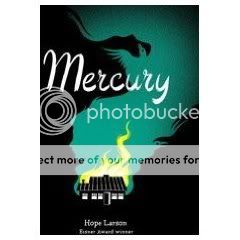
Mercury
Hope Larson, writer/artist
Atheneum, 2010
240 pages
$9.99
Hmm.
Okay, first of all, can we talk about what a lovely package you’re getting for $9.99? That cover is a killer, and Larson’s luminous line does nothing if not radiate “look at how beautiful this comic you’re reading is!” with every glance. Her blacks shimmer and shine, and her characters’ eyes glow like Influence in an old Chester Gould Dick Tracy. Seeing her art employed in a tale of familial and romantic teen angst up North gives the impression of a Craig Thompson with control instead of ecstasy as the key ingredient. For a measly $9.99, a price point even many tankubon volumes appear to have abandoned by now, the tween and teen girls who are Mercury‘s target will be getting a lot of art-object bang for the buck.
As for the story, I’ll be honest: Going into this thing, I was ready to be at a loss coming out of it. I have zero experience with YA fiction for girls, and very little with YA fiction for boys, even when I was a YA myself; there’s a degree of critic-proofing that that genre and that demographic lacquers on to any project. I was prepared to come away saying “Well, I see what’s going on here, and I’m guess it will/won’t work for its audience, but ultimately it’s not for me.” The critical white flag in other words.
And sure enough, there’s some YA stuff that fell a little flat for this less-than-YA. The period setting and attendant slightly stiffened dialogue, for example, are an obstacle that the earlier of the book’s two parallel plotlines have to work hard to overcome. I’m just not a bonnet-book guy, and unless you’re in a village that could potentially get raided by orcs, I don’t want to hear about how you have to finish your chores before Father returns from the market. To be less fatuous about it, I often find myself wishing that period fiction could just lose the dated dialect and have the characters speak like people today would, eschewing anachronisms but otherwise talking normally. I suppose you could always be a David Milch-level genius and devise, y’know, the best period speech ever, but barring that I feel like more is lost than gained with the distancing effect of the more formal speech–though to be fair, that’s often part and parcel of the stricter social codes that end up playing a huge part in the story, so perhaps that’s unfair. Meanwhile, the high-school setting of the contemporary half of the book is strangely sexless for a relationship-focused narrative; it’s funny to think of these characters as being in the same age group as the gang from Black Hole. A librarian who’d run screaming from The Diary of a Teenage Girl is going to have no trouble putting Mercury on the shelf, and that’s a sensible decision–and one for which Larson compensates with lots of finely observed detail regarding how teenage emotion can imbue everything from sleepover movie-watching to a pizza lunch with strange melancholy power. But it’s also not really the high school experience I remember. In books that deal in emotional truths, that’s a shortcoming, no matter how justified the sanitization might be.
But! No white flag here, no shrug of the shoulders and mumbling of “Eh, not my thing, but I bet your niece will like it, maybe.” Taken on the same terms as any other comic, Mercury is still an idiosyncratic, ultimately gutsy read. The kicker is the period story, about an itinerant prospector who finds gold on a farmer’s property and makes time with his teenaged daughter Josey while he helps the dad mine it. After a long rollout that has you suspecting the potential for heartbreak but not necessarily expecting it, takes a sudden and viciously sharp turn for the tragic, even the horrific. Thinking about its denouement now, I’m suddenly reminded of a sequence in, of all things, Louis Riel, that’s how severe Larson is willing to get here. But what ruins the lives of the characters in the past sets up a much better life for the characters in the present, specifically Josey’s teenaged descendent Tara, left with her aunt and uncle and trying to find her way among the public-school kids her single mother took her away from for homeschooling when a nasty divorce screwed her up. I won’t get into exactly how, but Tara’s happy ending, thoughtfully only teased rather than spelled out, is a direct result of the terrible misfortune that befalls Josey. I suppose you could read some sort of pat “circle of life, sunrise sunset, strikes and gutters, ups and downs” kind of message into that, but I saw it as a tougher, more bracing idea: that actions have consequences that reverberate down the line for decades, even centuries, enough to change entire lives. For an age group that tends to see everything, except perhaps the SATs, as somehow both all-encompassing and utterly in-the-moment, confronting the idea of legacies, unexpected ones at that, is stinging stuff.
But riding shotgun is the notion that in a world that works like that, you should take your happiness where you can get it. That’s what Tara does over and over: she forces herself to overcome her jitters and befriend the cute boy she meets, she hunts for the things that will improve her life, and–she has no way of knowing this, but of course Larson definitely does–she doesn’t allow the tragic legacy of her forebears to prevent her happy ending. None of this is handed to you with neat parallels or telegraphed transitions, by the way: I’m still teasing it out, and I’m glad that’s what I have to do.
Comics Time: Night Business #3
February 3, 2010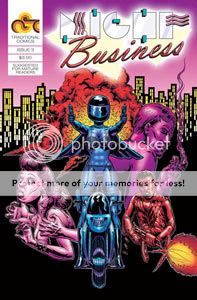
Night Business #3
Benjamin Marra, writer/artist
Traditional, January 2010
24 pages
$3
Buy it from Traditional Comics
About the Author:
Benjamin Marra is an artist who lives in the city. He is utterly and completely passionate about art. “Art … consumes me,” says Marra, “It is a part of my soul. When I look at a painting on the wall and I see a brush stroke, I can see the universe in it. I spend a lot of my time in galleries and museums looking around at the artworks. I like to see what’s going on in the art scene, you know, see what the new concepts are in art, see what my colleagues are up to.”
–from Night Business #3
The above text is pretty much what I love about Night Business in a nutshell. It’s simply a perfect encapsulation of a teenager and/or shut-in’s idea of what the City is. Artists who refer to themselves as such going to galleries and museums to stay on top of the activities of their cutting-edge colleagues. The glamorous, high-paying world of stripping and stripper management. Pimps who squirrel away a small army of thugs in warehouses filled with wooden crates and barrels of gasoline. Cops who thought they’d seen it all learning they haven’t, not by a long shot. One good man, pushed to the limit, taking a stand for what’s right and to hell with the consequences. Streetlight people, oh oh oh.
I don’t have the first two issues in front of me, but my impression is that this is the strongest yet on several levels. The insistent, grandiose stupidity of the writing reaches a delirious pitch here, my favorite example being the no-nonsense gun-toting would-be rapists who accost a pair of women on a thoroughfare broad and bright enough to be 14th Street: “Hey, ladies!! Are you looking for a party?!” “Hah, yeah! Are you looking for a party?! You’re invited to our party!” “We’ve got your official party invites right here! Don’t move.” “Scream and you die.” The pacing’s pretty sweet too, with the climactic fight between Johnny and the aforementioned warehouse full of thugs staged with one beat per panel, like the drum intro to “Big Bottom.” It ends with a glorious pin-up of Johnny flying through the air as he escapes an explosion, with knowingly wonky foreshortening, neatly symmetrical bursts of smoke and flame, and shiny inking showing off Marra’s studiously hidden chops despite himself. I’d kill to hang that page on my wall, let me just tell you. I’m all about seeking pleasure in comics these days, and this comic gets me off but good.
Comics Time: The Winter Men
February 1, 2010
The Winter Men
Brett Lewis, writer
John Paul Leon, artist
DC/WildStorm, 2009
176 pages
$19.99
Whoa ho ho, this is something special, huh?
I was only ever vaguely aware of The Winter Men during what struck me as a very long run for a six-issue miniseries, though I’m pretty sure I was confusing it with Peter Milligan and C.P. Smith’s The Programme for much of that time. I got the sense, just by seeing who was reviewing it, that it was a genuine critics’ darling, and I feel like I also heard that the production process was an unhappy one, with long delays or editorial troubles or something. I knew it was about Russian supersoldiers, drawn by JP Leon, so I mentally located it on a continuum with Sleeper and Gotham Central and Daredevil and other books that filtered superheroes through crime and espionage and drew them in a scratchy, black-heavy naturalist-noir style. That’s a subgenre people will associate with the ’00s like grunge and the ’90s, I think; I’ve still got a soft spot for its past examples even though I don’t know how much more of it I really need, so I figured hey, a limited series of it would be a pleasant way to spend a couple of train rides.
What I didn’t anticipate was Brett Lewis. Jiminy Christmas, this guy. I can’t remember the last time I read a genre comic this in love with language, this thorough and astute at developing and deploying its own. And here’s why it works: The Winter Men is about the bleed between the warriors and enforcers of the fallen Soviet Union and those of the New Russia’s criminal empires, a fluid and yet impenetrable world characterized by byzantine alliances, shades-of-gray legality, and the lack of any kind of centralized authority on either side of the law. The main spider we follow around this web is Kris Kalenov, an ex-spetznaz who was part of, essentially, the USSR’s Iron Man program, and who now works as a crooked cop for Moscow’s mayor, who runs the city like an independent state. He gets caught up in a kidnapping case with roots in an entire alphabet soup of international espionage agencies, military unites, and Russian mafiya outfits–the kidnapping’s the main throughline, finding out whodunit and all that, but it’s the journey, not the destination, that matters. Kalenov and his three comrades from the war–now a soldier, a gangster, and a bodyguard–get drawn through the web to and fro, and we follow him on such diverse enterprises as working undercover for the CIA infiltrating a Russian mob in Brooklyn, grabbing a criminal for a witness ID on behalf of some judge, conducting a hit, organizing a commando raid on a remote super-science outpost, drinking with his friends, fighting back against a new organized crime outfit as it muscles in on his gangster friend’s turf, taking down a couple of major crime kingpins, stealing a table from a McDonald’s, and on and on. In other words, The Winter Men is like The Wire: Moscow. Everything’s connected, but how is almost impossible to determine, and how to get it all to work for you instead of against you is even more remote. You work the angles you can and hope you did something right.
So, as a feat of storytelling, it’s impressive. But the language in which the story is told is directly analogous to the story itself–that’s the real knockout. Lewis develops a rhythm of speech that suggests a work of translation even when all the characters are talking to one another in fluent Russian. It’s not a pidgin English, it’s not a full-fledged Nadsat-style dialect. It’s just a question of where the narration and dialogue leans into you or away from you–unfamiliar slang or jargon whose meaning is nonetheless unmistakable, unexpected formality, disarming directness, repetition, a choice of which words to use, which to emphasize, which to elide. It’s a verbal map of the territory–shifting, shady, inscrutable, yet practical, impactful, something you can use to get what you want. A world with familiar elements, but arranged in a dizzyingly distant fashion, leaving you racing to keep up. In its way it’s as elegant as David Milch’s gutter Shakespeare or David Chase’s corner koans, and as inseparable from the world being depicted, the people populating it, and the message being delivered.
Weak spots? Sure. The super-stuff is superfluous–it brings nothing to the table you haven’t seen before, has no real narrative weight, and as best I can tell the only real purpose it served was “getting this book published through WildStorm.” I wished it wasn’t there, wished this was a straight-up crime book. The way it becomes so much more prominent in the final chapter after entire segments where it wasn’t a factor at all–including a pair of mini-masterpieces in which Kalenov and his gangster pal Nikki transport a suspect and fend off a challenge, the latter utilizing Dave Stewart’s where’s-waldo spot color for the book’s visual highlight–feels rushed and lopsided. I also wanted to see more out of Nina, the bodyguard, who never had much to do other than be beautiful and quietly pissed at Kalenov.
Mostly, though? I just wished it were longer. A nice long run of Winter Men trades could have been one of contemporary comics’ consummate pleasures. But this thing feels so meaty as is, so novelistic in its ins and outs and ups and downs, that I didn’t come away feeling robbed. Thrilled, more like.
Comics Time: Axe Cop
January 29, 2010
Axe Cop
Malachai Nicolle & Ethan Nicolle, writers
Ethan Nicolle, artist
Ongoing webcomic, December 2009-January 2010 and counting
This comic was inevitable. In retrospect, it’s where we were headed all along. The New Action. The Art of Enthusiasm. Attempts to recapture the childhood joy of drawing, the ability of action to form its own narrative logic through sheer visual cohesion, the incorporation of the almost surrealist conventions and tropes of video games and action-figure lines and kung fu films, all of that–Axe Cop does it by having a five-year-old kid come up with characters and storylines and dialogue for a 29-year-old Eisner nominee to lay out and draw. From Bryan Lee O’Malley’s Scott Pilgrim to Benjamin Marra’s Night Business to Geoff Johns’s Green Lantern to C.F.’s Powr Mastrs to Ed Brubaker & Matt Fraction’s Immortal Iron Fist to Brian Chippendale’s Ninja to Kazimir Strzepek’s The Mourning Star to Kevin Huizenga’s Ganges #2 to BJ and Frank Santoro’s Cold Heat to Malachai and Ethan Nicolle’s Axe Cop. There was no other way.
Now, let’s not get crazy here: the elder Nicolle is not inventing new ways of conveying action and physicality and space on a page, or constructing elaborate metaphors for the fate of the artist in a rapaciously capitalist society, or drawing on previously ignored methods of pop-culture storytelling. He’s “merely” an accomplished illustrator, drawing his kid brother’s delightfully crazy ideas for a super-cop with an axe and his partner, who wields a flute as a weapon, then transforms into a dinosaur, then transforms into an avocado. His swanky line is employed to milk humor out of mirrored sunglasses and mustaches, or superheroes made out of socks that fly around like boomerangs, or babies with unicorn horns who you can throw around like a grenade. Ethan uses his older fanboy’s experience to wring specificity and hilarity out of the super-action conventions with which young Malachai is already entertainingly familiar: opposite-number characters (Bad Santa and his newfound enemy Good Bad Santa), secret origins (Axe Cop and Avocado Soldier are secretly brothers whose parents were killed by their time-traveling nemesis, but they bumped heads while walking backwards and have had amnesia about their true relationship and origin ever since), enemy archetypes (rejected heroes, giant robots, elementals) and so on.
I’m not going to say the storytelling style is inimitable, because lots of people imitate it, but there’s no faking the “and then…and then…and then” rhythms of a really excited first grader. The comic’s web interface enhances the flow: Instead of clicking from page to static page, you drag your cursor to scroll around one gigantic mega-page per episode, catching the craziness as it comes. My guess is that this is as much of a reason that this comic went from total obscurity yesterday morning to Internet fame by yesterday afternoon as the don’t-that-beat-all backstory, impressive and accessible cartooning, and overall Looney Tunes “Duck Amok” zaniness level. On every level it’s a pleasure of a sort you haven’t experienced elsewhere. Hernandez, Buscema, Kubert, Nicolle–if you’re going to be online for the next few months, make room in your brother-act pantheon.
Comics Time: The Perry Bible Fellowship Almanack
January 27, 2010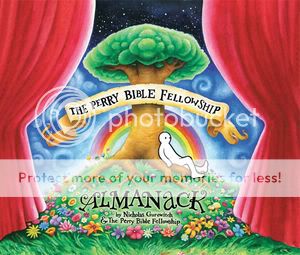
The Perry Bible Fellowship Almanack
Nicholas Gurewitch, writer/artist
Dark Horse, 2009
272 pages, hardcover
$24.95
Read these comics for free at PBFComics.com
Every single Perry Bible Fellowship comic strip ever, plus a bunch of extras that didn’t make the website cut, in a sizable yet reasonably sized hardcover with one of those built-in ribbon bookmark things, for $25 SRP? Pretty glorious. Nick Gurewitch’s webcomics sensation–and that’s exactly what it is/was, a strip that batters past the most well-secured don’t-care-about-webcomics defenses–was already the kind of work you’d stumble across thanks to a friend’s recommendation and almost instantly attempt to consume in its entirety in one sitting. Which isn’t even all that hard, given the one brief shining moment Fawlty Towers/British Office brevity of its run. Moreso than with many other webcomics, a fat book collection serves the material well.
Placing every strip between two covers allows you to easily follow along on several parallel tracks. You can watch the maturation of Gurewitch’s art, for one. His line smooths and strengthens. His designs round out and combine with his increasingly sophisticated and subtle color palette to produce that sickly sweet Stay Puft feel. He becomes increasingly comfortable showing off illustrative chops not usually seen in a campus weekly–his dinosaurs, monsters, and animals would all be at home in Golden Age pulp or an immaculate children’s storybook, while his impersonations of Edward Gorey and Shel Silverstein or his pastiches of Asian and commercial illustration styles are impeccable. His stable of recurring visual tropes–people with inanimate objects for heads, meticulously drawn fantasy- and animal-kingdom characters, those cookie-cutter people–have more of an impact each time.
You can also trace the evolution–maturation’s definitely not the word here–of his sense of humor. The strip starts out as the kind of bawdy, horny humor lots of collegiate wits unleash upon their newly parentless world. A recognition that sex is fun and attractive people are awesome joins hands with the realization that one’s pursuit of the aforementioned is often really stupid and the failure to make it happen is often miserably painful, and off they go, skipping and tra-la-la-ing across your funnybone.The strip also mines a lot of humor out of senseless violence from the get-go. But right around page 82-83, “Mrs. Hammer” and “Gotcha the Clown,” its riffs on that theme, and the whole gestalt of the strip, make a quantum leap. Suddenly the capriciousness of physical violence in the PBF world is joined with a gleefully anarchic sense of comic timing–that much-ballyhooed gap before the final panel, much wider than any other gag strip, leaving much more to the imagination, and making the payoff that much more unexpected and hilarious. Something awful will most likely happen by the end of any given strip; the trick and the genius of it is that you don’t have any more idea of what it’ll be than the poor saps to which it’ll happen.
It’s worth noting that it’s not just that leap of faith Gurewitch forces you to take between the penultimate and final panels that makes his strip such solid gold by the second half of its run. (To be fair, there are three or four head-scratching clunkers in the early going; it took him a while to make that punchline panel work.) It’s the way he sticks that landing, the moment-in-time specificity of the body language he so frequently depicts–freezing battling characters in mid-beatdown, capturing just the right looks of amazement on the faces of cheering crowds, doing the same with characters weeping in devastation or fleeing in terror. There’s also often a perfectly calibrated comedown from the pomposity and grandiosity of the beginning of the strip to the deflated rimshot or sad trombone of the final panel, and Gurewitch uses an array of tools to nail it: ornate, expressive lettering; shifts in illustration style; jumps in time or spatial perspective.
And then like that–poof–he was gone, off to do animation or funny award-acceptance speeches or whatever it is he’s up to. He left behind one of the most visually accomplished and mercilessly funny comics this side of Tales Designed to Thrizzle. If you like to laugh at comic books, this belongs on your bookshelf.
Comics Time: One Model Nation
January 25, 2010
One Model Nation
C. Albritton Taylor, Donovan Leitch, writers
Jim Rugg, Cary Porter, artists
Image, December 2009
144 pages
$17.99
Well, here’s a strange little number. Let’s take it step by step. C. Albritton Taylor is Courtney Taylor-Taylor, lead singer/songwriter for the Dandy Warhols, but the only reason I know that is because artist Jim Rugg said so on his blog months and months ago. Donovan Leitch, scion of “Atlantis” troubadour Donovan and a musician himself, is credited as the book’s “historian” and shares with Taylor the credit for “original concept,” which I assume means he helped concoct the Venn diagram of its plot, in which late-’70s radical West German politics and terrorists overlap with a breed of Cold War art rock, highlighting a very, very specific niche. Rugg’s work here looks nothing like Rugg’s work anywhere else I’ve seen; it’s like he purposefully threw his usual slick and kinetic art out the window, employing a rough, thin, uncertain pen style instead. Riding shotgun for a few-page framing device is artist Cary Porter, working in a mushy all-pencils style that reminds me of Nikolai Maslov’s Siberia. Taylor is billed as “producer” along with Image’s Joe Keatinge and cartoonist Mike Allred; if the incongruously colorful David Bowie who shows up in the middle of the story to chat with the titular band isn’t drawn by Allred himself, then Rugg is doing the world’s best Red Rocket 7 impersonation.
The story: In 1977 or thereabouts, a four-man band called One Model Nation–from what we can gather, a stylistic, sonic, and sartorial melange of Kraftwerk, Einsturzende Neubaten, Joy Division, Gang of Four, and Berlin-era Bowie–appear poised to become West Germany’s, and perhaps the world’s, next big thing. But the peril of being the voice of one’s generation is that sometimes one’s generation is filled with terrorists, as was the case in the Germany of the day, plagued as it was by the nihilistic/Communistic violence of the Red Army Faction, aka the Baader-Meinhof Gang. When people peripheral to OMN’s world–friends, fans, exes, roadies–turn out to be involved in the killings, the intense public, political, and police scrutiny forces the bandmates, particularly sensitive Sebastian, to come to terms with the at-times dueling imperatives of fame and creativity.
It’s tough not to read the book as thinly veiled autobio at times, or at least as a soapbox upon which Taylor can talk about issues he clearly cares about a great deal. It’s easy to imagine the framing conversation between a fellow-traveler of OMN’s and a documentarian investigating their disappearance as a variant of ones that took place between Taylor and Ondi Timonder, director of the excellent Dandy Warhols/Brian Jonestown Massacre doc DiG! Ditto the band’s chat with Bowie–a friend of Taylor’s–and his droll observations about taste, art, and politics. Ditto, almost didactically so, a comparatively long discussion of critics, pundits, the press, and their deficiencies. The very idea of the book, a fictionalized account of a particular era of rock and roll that its makers find fascinating, reminds me of a discussion I had with Taylor when I interviewed him long ago about the film Velvet Goldmine, which, despite his admiration for director Todd Haynes, he dismissed as “jocks dressing up like rockers.” This is sort of like Velvet Goldmine “done right.”
And it is done right, I’d say. I mean, it’s a weird weird beast. I think Rugg’s style here is going to throw a lot of people–it’s so understated, so scratchy, with muted colors, and a really rigid panel grid with wide gutters. The rectangular word balloons and computerized lettering meshes with those big white lines to create a feeling of artificiality and distance. The character designs are at times difficult to distinguish from one another, and they frequently sit on the page as if they’re uncomfortable being there, all awkward elbowy arms and long faces with dull hair hanging limply. The plot kind of weaves in and out and back and forth: Sebastian leaves the band, fed up with the attendant nonsense, comes back, high-tails it after a raid, comes back again… Cameos by the Red Army Faction and the actual, Russian Red Army are given equal weight as cameos by, say, Klaus Nomi. The whole thing ends with a whimper, too. There really aren’t any epiphanies or climaxes. I imagine that if you don’t share my fondness for the creative team or the subject matter, you’ll walk away shrugging.
But I think that’s the idea. Making art, the book seems to argue, is an ongoing process of decision-making rather than a vocation handed down by the gods. Obviously innate gifts and talent are a part of it, but hitting upon the sound and style that rockets you to the top is the product of countless factors beyond your control. A lot goes into being a hero, and if you make it, terrific, but some people are heroes just for one day, for one reason or another. Nomi died of AIDS; One Model Nation peters out in the face of the revelation that the terroristic public image thrust upon them was just that–an image. They make a decision to stop making the decisions necessary to be rock stars. Some of it’s in our control; a lot of it isn’t. What you do may be dramatic, it may be influenced by dramatic events, but whether you do it or not is not a drama. It’s kind of a gray message. It’s kind of a gray book. I’m still mulling it over.
Comics Time: Crossing the Empty Quarter and Other Stories
January 22, 2010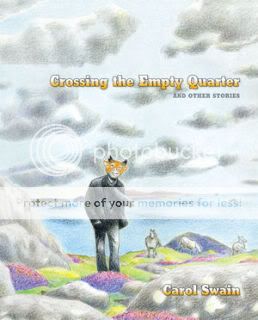
Crossing the Empty Quarter and Other Stories
Carol Swain, writer/artist
Dark Horse, December 2009
200 pages, hardcover
$24.95
Carol Swain’s panels are like prisons. They feel too narrow, too cramped for her dramatic angles, her furiously filled-in blacks and grays, her askew, sometimes even fish-eyed perspective, and her disorienting character close-ups. Thus they root you in this moment, then this one, then this one, force you to confront it head-on–often literally, bringing you right up against the face of the protagonist in each of this anthology’s thirty-plus short stories. Which is fitting, since they too are often rooted or even trapped themselves. Some are hemmed in by the metaphysical constructs of Swain’s daydreams or gentle magic-realist conceits–immovably knee-deep in the mud of the Atlantic, chained in the bedroom by overprotective parents who alternately rattle off the dangers of the outside world and the many knitting projects she could do inside, sealed in the black glass of fused sand created by a bomb blast in the desert, trapped in the middle of nowhere by faulty compasses and starless skies. Others are stuck in more quotidian predicaments–an immigrant’s plight, soft vote suppression, lots and lots of dead-end towns, lots and lots of dull grinding urban grayness, lots and lots of glimpses of a larger world that seem only to reinforce the futility of reaching further and higher. And yet, there’s always that lovely, lush shading and linework, a hint of softness, and with it a suggestion that maybe there’s reason to hope. I think that makes the book harder on you, ultimately. In hopelessness there’s release.
Comics Time: Detective Comics #854-860
January 20, 2010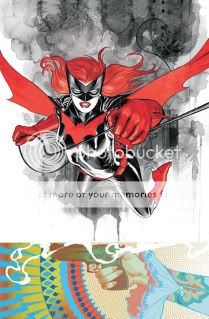
Detective Comics #854-860
Greg Rucka, writer
J.H. Williams III, artist
DC, 2009-2010
24 story pages each
$3.99 each
I’ll admit it, I was too hard on Detective Comics. I always understood, and agreed with, every word of praise offered for J.H. Williams III’s almost comically proficient art, mind you. You don’t need me to go over that, Jog handled it nicely. It’s just that beyond the art…well, I didn’t think there was anything beyond the art.
Maybe it’s that Question back-up that threw me, with the erstwhile Renee Montoya adopting the exact same crimefighting set-up as the lead feature’s star, i.e. beautiful lesbian with military and/or law-enforcement training adopts the mantle of a male superhero while her old-man sidekick sits at a computer back at HQ. And it’s not exactly as if either of them are the only strong-women-also-cry tough gals Rucka’s ever written. Meanwhile, some past Rucka plot points I never really got into come along for the ride, most prominently the convoluted Religion of Crime and its Batwoman-obsessed prophecies. I liked that idea when it was tied directly into Darkseid–the more other stuff that it hooked up with, from Vandal Savage to some old Rucka characters to the actual Bible, the less compelling I found it.
On a more fundamental level I think I’m just a lot less interested in superhero comics as fed through the filter of writers who’ve read, watched, and written a lot of spy and crime fiction over the past decade. What was once a thrilling deviation–seriously, The Ultimates, Sleeper, Gotham Central and the Daredevil/Alias/Powers trifecta blew my mind once upon a time–is now the default. Over at Marvel you’re seeing, or you will be seeing, I think, that noir/black-ops framework give way to a bold new era defined by loosey-goosier writers like Matt Fraction and Jonathan Hickman; Ed Brubaker’s given a pass because that really is the perfect place for a postmillennial Captain America to be. At DC, that kind of stuff doesn’t interest the main moneymakers and ship-steerers, Geoff Johns and Grant Morrison, in the slightest. And though I’m far less militant (heh) about this point than other readers I know, there’s always the suspicion that shoehorning superheroes and their fantastical fiction into exciting but reality-based counterpart activities like law enforcement and espionage and organized crime is a way to strip them of the weirdness and wonder even the worst of them usually contain–to polish them up even while darkening them up, to smooth out the angles and make them action-franchise-friendly. So for all those reasons there’s a degree to which I’ve had my fill of books in which characters nonchalantly drop military argot in conversation and suchlike, and thus I’m a tough nut for Rucka’s writing in ‘Tec to crack.
But after taking the opportunity to read all seven issues of the “Batwoman in Detective Comics” run, I’ve realized just how far short I was selling it. Is the story a game-changer, a brain-melter? No. But it’s a good deal wilder and weirder and, yes, more wondrous than your average spandex-turned-kevlar effort. And shame on me for not seeing how Williams’s art, far from an Avatar-style silk hat on a pig, draws on and enhances Rucka’s strongest stuff while muting the weaker elements. Simply put, how did I miss how very Hot Topic the whole “pale redheaded lesbian dresses up like an S&M vampire and does battle with her pale loligoth Satan-worshipping evil twin sister who dresses like Alice in Wonderland” thing is? It’s a very glam, very goth, very fetishy, very fun set-up, hammered home with Williams’s dark psychedelia, polymorphous mimickry (that extended Mazzucchelli impersonation is really breathtaking) and (you don’t hear much about this, but for real) dazzling good-girl art.
What’s more, this is actually some of my favorite Rucka writing I’ve come across. You know how most superheroes have a two-stage origin? Batman’s parents are killed, and the bat flies through his window; Spider-Man gets bitten by the spider, and his Uncle gets killed; Superman’s home planet blows up, and he’s raised in all-American fashion by his kindly adoptive parents? Batwoman’s mother and sister are killed, and then she gets Don’t Ask Don’t Tell’d out of the military. She’s not just gay–homophobia is a foundational trauma for her. I love it. I also really like the air of doomed glamour, to use a favorite phrase of mine of late, with which Rucka imbues the whole affair. Batwoman’s bright-red trimmings seem like war paint she puts on to power past the sense that this was all a terrible, terrible idea. Rucka knows the power of pointed silences and fade-outs, all of which are painstakingly choreographed by Williams, using disembodied panel boxes to pinpoint moments in the comics equivalent of slow motion. When we suddenly see Alice’s tear-streaked mascara emphasized during her fight with Batwoman’s father, when Alice falls across the top and down the right hand side of a climactic spread with a great gulf of ocean mutely occupying the rest of the pages–it means something. I can already hear the Moore-derived derision that none of this has any echo in any one’s real life, but even if that’s true, who cares? It’s violent, it’s sexy, it’s spectacular–just what I want from my superhero comics.
Comics Time: Forming
January 18, 2010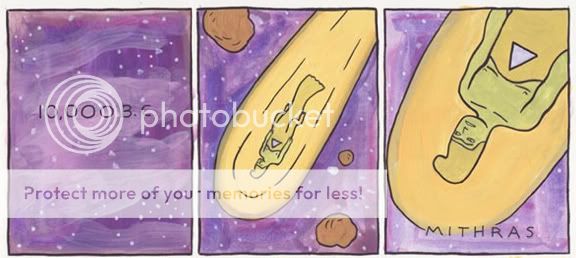
Forming
Jesse Moynihan, writer/artist
ongoing webcomic, January 2009-January 2010 (and counting)
I was pretty happy with the high concept I came up with for Afrodisiac, so let’s try it again: What if the stars of Anders Nilsen’s Big Questions were the Big Answers? Like Nilsen’s funny-animal epic, Forming tells the tale of characters struggling with the stuff of existence–life, death, fate, their place in a universe that appears fundamentally capricious. Unlike Nilsen’s birds, though, Moynihan’s characters are archangels, cosmically powered alien beings, demigods and titans of legend, founding members of humanity who commune (and copulate) with higher beings on a daily basis. The metaphor scales our human plight up, not down, in other words. The art follows suit. Moynihan’s line is soft, its weight gently fluctuating, shored up by quietly irregular coloring, suggesting the same vulnerabilities as Nilsen’s stippling and figurework. But the design is maximalist: Crazy Kirbyesque costumes, Fletcher Hanks psychedelic action, long sequences of physical combat, extradimensional travel, mental fantasias. The stakes are similarly higher–the central action includes Lucifer’s battle with Michael and the birth of human civilization as conferred upon us by ancient astronauts. The gag, of course, is that these highfalutin’ types are just as messed up as we are, complaining about their jobs and their family and their sex lives and so on.
So yeah, you’ve seen it before. But what makes its use in Forming so appealing is the strip’s rolling, loping, laconic pace. New subplots–a literal clash of the titans, Lucifer & Michael, Adam & Eve, corporate intrigue on the alien homeworld–are slowly folded into the strip, and our lens on the action swings back and forth between them like a pendulum. Moreover, most of the strip’s two-page installments are stacked on top of each other, our eyes slowly cascading downward as the action unfolds over a long vertical plane. The cumulative effect does even more than the specifics of the dialogue in terms of humanizing the cosmic characters and wringing bleak gallows humor from their dilemmas. If this thing ever gets collected in print, I’d love to see it in a super-tall, super-narrow format just for that reason. It’s a very pleasurable reading experience, and it’s easy to see how rewarding a weekly visit could be.
Comics Time: What Had Happened Was…
January 15, 2010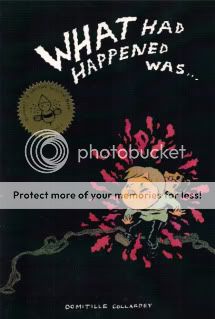
What Had Happened Was…
Domitille Collardey, writer/artist
Weeping Willow, 2009
20 pages
$6
Buy it from Domatille Collardey
You could rough this one up pretty bad if you wanted–like Jog says, it’s an alternative comic of the “here’s some stuff that happened” school that people who dislike alternative comics think all alternative comics attend. Collardey’s stories–actually, that’s too strong a word–reminiscences about her move to Brooklyn, her visit to San Francisco, her interview with Francoise Mouly, her conversation with her Holocaust-survivor grandfather, even her very life story aren’t revelatory, or (with one obvious aforementioned exception) even memorable on their own terms. What they are is a showcase for her art, and she’s got some serious chops. I’m really drawn to her wavy line, the way a series of gentle S-curves both cohere into little people and convey the timidity and uncertainty with which Collardey apparently approaches the world. Against that backdrop her depiction of Mouly really pops: Bigger eyes rimmed with make-up, darker hair, taller body, confidence and competence standing out amid Collardey’s gee-shucks artistic personality. Equally impressive are color sequences that employ brown and gray watercolors to convey warmth rather than desolation or “realism,” most notably in a self-portait that strikes me as both clear-eyed and flattering–which is then surrounded by a colorful panoply of cartoon heads. The paper stock really holds Collardey’s brushwork and colors well, by the way. As a sampler of an artist with a lot of potential, it’s worth a glimpse. Let’s see where she goes from here.
Comics Time: Afrodisiac
January 13, 2010
Afrodisiac
Jim Rugg & Brian Maruca, writers
Jim Rugg, artist
AdHouse, January 2010
96 pages, hardcover
$14.95
What If Pim & Francie Got Bitten by a Radioactive Luke Cage? Afrodisiac, like Al Columbia’s fractured masterpiece, is a comic, an art book, an objet d’art, an assemblage of stories and story fragments and illustrations and pastiches and sketches and ephemera and so on. Yet I’m guess everyone interested in an Afrodisiac book would have been perfectly happy with an anthology of straightforward blaxploitation riffs, showcasing the heavy-lidded, angular action characters, juicy design choices (this thing is like sound-effect lettering porn), and deadpan over-the-topness we saw from the Rugg & Maruca team in Street Angel, maybe with a few ben-day-dot nods in the direction of faux vintage. So why go further? Well, for one thing, if you have the design talent that Rugg and Chris Pitzer do, why not.
But what these moves communicate is the slipperiness of what Afrodisiac really is. The titular hero receives a different origin with each story–he’s a cyborg, an inner-city Billy Batson, a ghetto Captain America or Thor or Spider-Man. He’s marched through a variety of comic-genre parodies–Archie, romance, funny-animal, Bronze Age Marvel magazines, Bronze Age Marvel comics. Sometimes his adventures are made to look like they could have sprung straight from the ’70s, but other times the coloring or the printing or the language (this ain’t Comic Code approved!) tip the project’s hand. And that’s to say nothing of Rugg’s art, which is sly and slick in a fashion that befits a guy who gets into the annual Society of Illustrators show every year rather than a member of the Gerry Conway-era bullpen. And have we ever lived in a world where a character like the Afrodisiac would get a toy line or a Saturday morning cartoon?
It could have simply coasted on the asskicking concept of a superhero pimp called the Afrodisiac, but every choice Rugg, Maruca, and Pitzer make here makes it harder to put your finger on what’s going on. Which, I think, is the point: Afrodisiac is an attempt by modern white nerds to capture and critique the art made by the white nerds of yesteryear’s attempts to capture the art made for that era’s black audiences in response to what that era’s white entertainment industry thought of that era’s black audiences, specifically what they wanted to see from the relationship between black criminals and white women. (Phew.) It is, in other words, about the nature of truth, about different marginal or marginalized subculture’s attempts to understand and interact with one another, how those attempts magnify and distort one another, and in the end produce art as fascinating and fractured and entertaining and incomplete as the cut-up “final issue” that ends the collection. Powerful stuff? You’re damn right.
Comics Time: Sleeper Car
January 11, 2010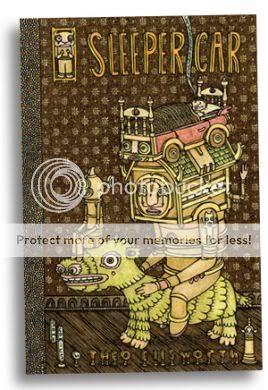
Sleeper Car
Theo Ellsworth, writer/artist
Secret Acres, 2009
32 pages
$6
Theo Ellsworth’s Capacity, a monumental work of ferocious interiority combined with irresistible openness, was one of the decade’s best comic debuts. It was a knockout. Sleeper Car is more like a playful tweak of the nose or pat on the buttcheek. Stepping away from the artistic-autobiography subgenre that made Capacity so singular, Ellsworth uses this 32-page pamphlet as an opportunity to deploy the same tools he used there–the endlessly inventive character designs, the googly eyes and rubber lips, the enveloping crosshatched backgrounds, the seemingly infinite fur and feathers and scales and joints and so on–in the service of what I think could best be called flights of fancy. The stories and strips here are funny, though they’re not out and out gag comics; they’re fantastical, though they’re too loose and unconcerned with narrative worldbuilding to qualify as fantasy. What’s interesting to me is seeing the different approaches he takes with each one.
For example, the longest, central story, about two verbosely formal robots who make a bet about the existence of gnomes, uses a staid six-panel grid to heighten its deadpan humor. But the source of that humor shifts throughout–first it revolves around the wordplay of the droids’ creaky way of speaking, then gets goofy showing the second robot passing the time as the first embarks on his search for proof, then there’s a series of very funny “photos” of the victorious robot’s shenanigans with the loser’s forfeited arm, and then there’s a punchline splash page (!) that injects a whole new comical menace into the proceedings. Throughout, it’s all about knowing just what image will nail the required effect. You see this in many of the strips here: A traveler’s wanderlust depicted by showing him distraught and on skis at the top of his staircase, say, or a sleeping behemoth scratching his head in wonderment as an explorer rockets out of his gullet, or a kid’s eyes peering from the distended neckhole of his pajama shirt as he wraps up his knees, feet, and arms in it to form a “pajama tent,” or a drawing of empty bus stop letting us down easy after a strip in which a traveler’s face transformed wildly from panel to panel. None of it’s gonna bowl you over, but none of it’s meant to. It’s expert, effective cartooning–little sketches of where a cartoonist with this visual vocabulary and this set of ideas can go. I’ll follow him there, that’s for sure.
Comics Time: Monsters
January 8, 2010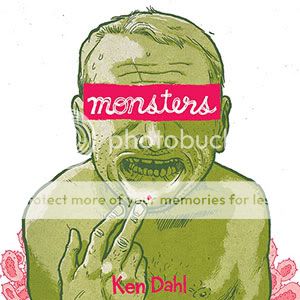
Monsters
Ken Dahl, writer/artist
Secret Acres, 2009
208 pages
$18
Gross-out sex-life autobiography has a storied history in alternative comics, but it’s sort of a St. Olaf story. (Crumb is repeated first as tragedy, than as farce.) Folks with sufficient cartooning chops are afforded ample opportunity to Tex Avery themselves out, which I do appreciate. And of course there’s the thrill we get from coming across someone with no internal censor–to paraphrase Hesh Rabkin, between their brain and their pen, they have no interlocutor. But it’s very, very, very well-trod territory, and you can count me among the people who came across Joe Matt’s Spent and thought “Well, that’s enough of that.”
So it took some persuading for me to give Ken Dahl’s Monsters the story of his life with herpes, a shot. Another comic about some creepy artist type’s loathsome behavior around and toward women? Drawn with confrontationally ugly underground-style depictions of everyone involved and hyperactive exclamation-point-ridden lettering? Coupled with enough grand-guignol lesion close-ups to trigger my skin-growth phobia like wo?
Wrong wrong wrong! I enjoyed the heck out of this book. For starters, I was giving Dahl’s art short shrift. Jeepers this guy is accomplished. I don’t point this out nearly often enough, but as a non-artist, I really get a thrill out of good cartooning because it’s so beyond my ken. To develop a visual vocabulary and deploy it consistently page after page…I mean, man. Anyway, on the most basic level, Dahl’s bobble-headed, adenoidal characters are crafted with an assured, flowing line that trails off into feathering wisps for a hint of vulnerability beneath the slickness. Moreover, they are an instant visual signature, serving both to deflate the angst and self-absorption of his story and satirically skewer the various alt lifestyles of which he is a tangential part. (For what it’s worth, I think the mockery–of everyone from Christians to vegans–is one of the less considered parts of the book, but still, no one comes out of this looking like an angel.) But more importantly for the book, they’re a template from which he can deviate for extravagant, almost Tom Neely-esque sequences, in which Dahl’s emotions and/or his infection literally explode from within and take over in monstrous fashion.
But for me, the most interesting thing about Monsters is Dahl himself. Turns out he’s not a creep at all! He has no idea how he got herpes, had no idea he had it when he gave it to his girlfriend, and commits a grand total of one genuinely douchebaggish actions in the entire course of the book. Instead, he obsesses on his condition to a psychologically debilitating degree, sealing himself off from having a healthy social life or any kind of romantic relationship for years. In fact, while the “educational filmstrip” facts’n’figures sequence about herpes simplex is the book’s ostensible centerpiece, for me the real tour de force was the ending, which in a quick one-two punch upends what I’d thought was going on with both the story’s plot and its moral. Dahl turns out to be far more victim than victimizer, and the deft way in which he teases that reversal out of our expectations for a book of this sort is its best trick.
